A smooth wedge of mass M is kept at rest on a smooth horizontal surface . Inclined face of the wedge make an angle θ with the horizontal . A particle of mass m collides normal to inclined face of wedge . If speed of the particle just before collision is u and coefficient of restitution is e then find velocity of wedge after collision .
Method 1 (using coservation of linear momentum)
If take wedge and particle as a system, no external impulse acts in horizontal direction, the linear momentum should be constant consrved in horizontal direction. As the particle is moving normal direction, it has no component of velocity in sloping surface direction (tangent direction).

Hence after collision particle will have no velocity component in common tangent direction. the velocity of the particle will confine along common normal direction only. Let velocity of the particle and wedge after collision vn and V respectively.
Conserving linear momentum in horizontal direction
mv0sinθ=MV+mvnsinθ............i
Now, using Newton's law of collision
(v2−v1)n=e(u1−u2)
(Vsinθ−vn)=e(v0−0) ..........ii
Solving i and ii we get
V=(1+e)mv0sinθM+msin2θ
Method 2 (Using impulse method)
The impulse acting on the ball and wedge can be represented as
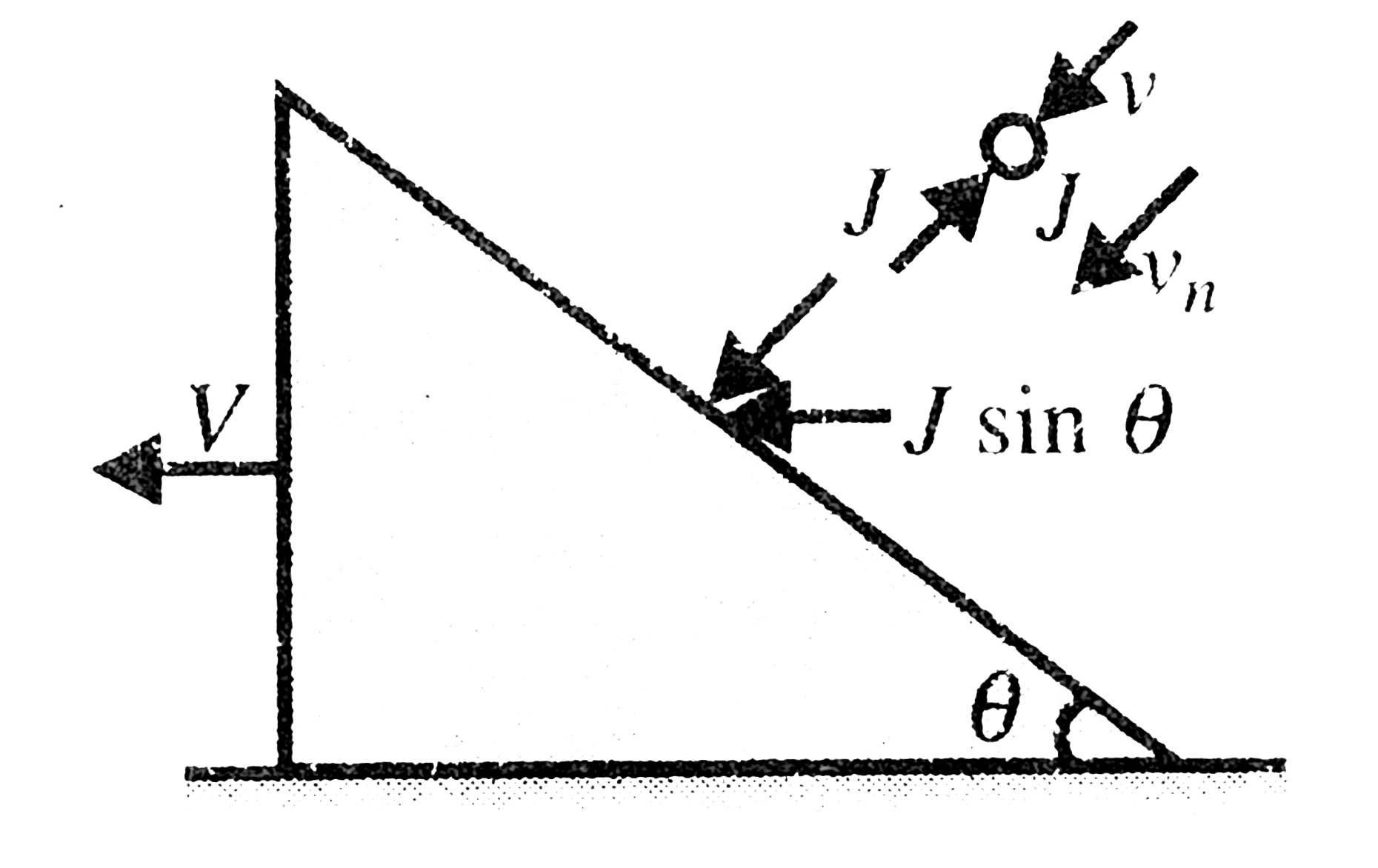
Jsinθ=MV......i
mvJ=mvn..........ii
And newton's law of restitution
(vsinθ−vn)=e(v0−0).........iii
Solving eqn i, ii and iii we get
V=(1+e)mv0sinθM+msin2θ
Topper's Solved these Questions
- BOOK - CENGAGE PHYSICSCHAPTER - CENTRE OF MASSEXERCISE - Solved Examples13videos
CENTRE OF MASS
- BOOK - CENGAGE PHYSICSCHAPTER - CENTRE OF MASSEXERCISE - Exercise 1.120videos
CENTRE OF MASS
- BOOK - CENGAGE PHYSICSCHAPTER - CALORIMETRYEXERCISE - Solved Example13videos
CALORIMETRY
- BOOK - CENGAGE PHYSICSCHAPTER - DIMENSIONS & MEASUREMENTEXERCISE - Integer2videos
DIMENSIONS & MEASUREMENT
Similar Questions
A smooth wedge of mass M is kept at rest on a smooth horizontal surface . Inclined face of the wedge make an angle θ with the horizontal . A particle of mass m collides normal to inclined face of wedge . If speed of the particle just before collision is u and coefficient of restitution is e then find velocity of wedge after collision .
View SolutionA block of mass m is placed at rest on a smooth wedge of mass M placed at rest on a smooth horizontal surface. As the system is released
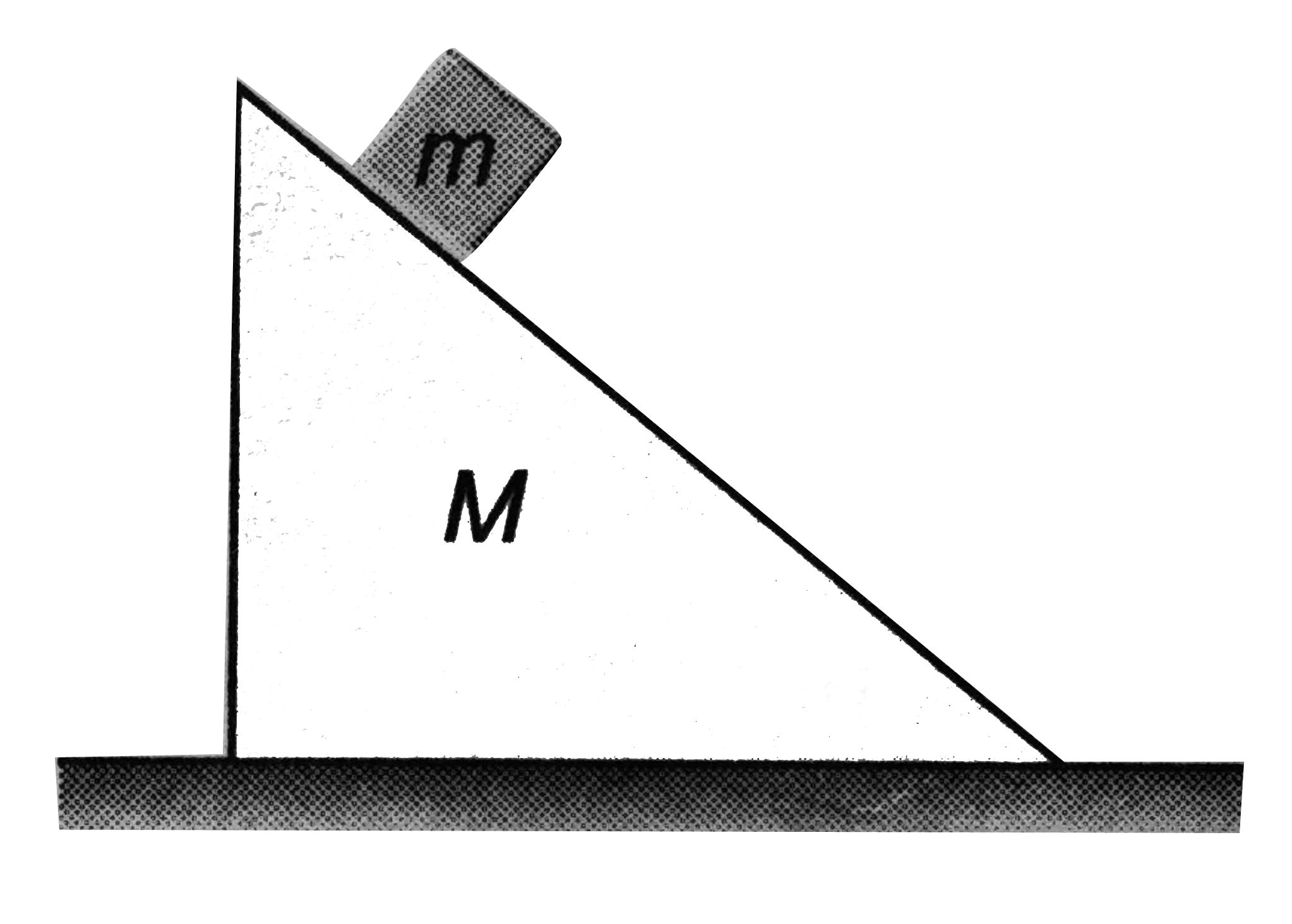 View Solution
View Solution
Knowledge Check
- Question 1 - Select One
As shown in the figure, a wedge of mass M is placed on a smooth inclined ramp that makes an angle θ to the horizontal. An object of mass m rests on top of the wedge. The sliding down the ramp at acceleration a. determine the apparent weight of the objects as it slides down. noth that there is friction between the object and the wedge so that the object remains relatively at rest on the wedge.
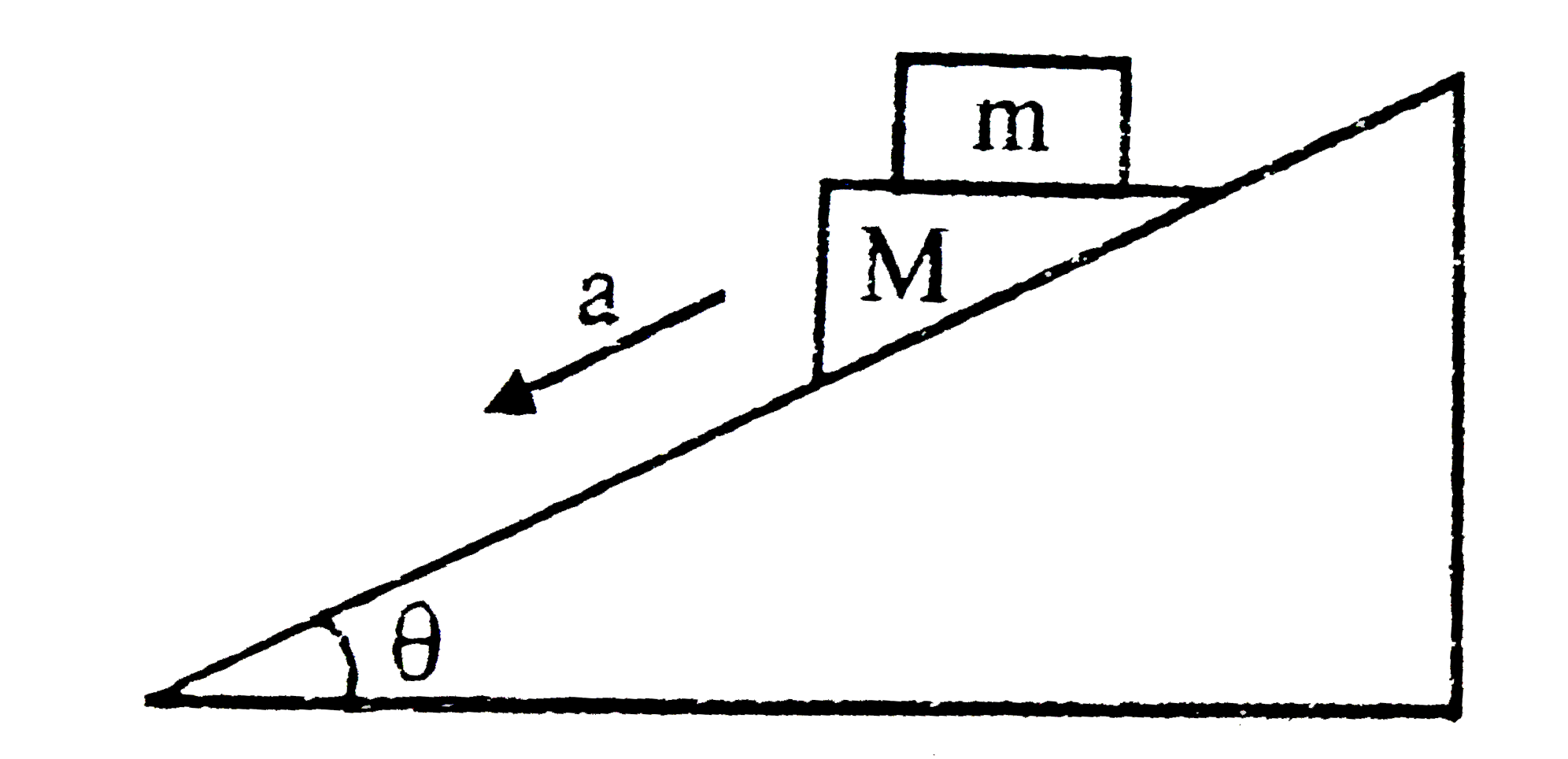 AmgcosθBmgcos2θCmgsinθcosθDmgtanθ
AmgcosθBmgcos2θCmgsinθcosθDmgtanθ - Question 2 - Select One
A wedge of height 'h' is released from rest with a light particle P placed on it as shown. The wedge slides down an incline which makes an angle theta with the horizontal. All the surface are smooth, P will reach the surface of the incline in time:
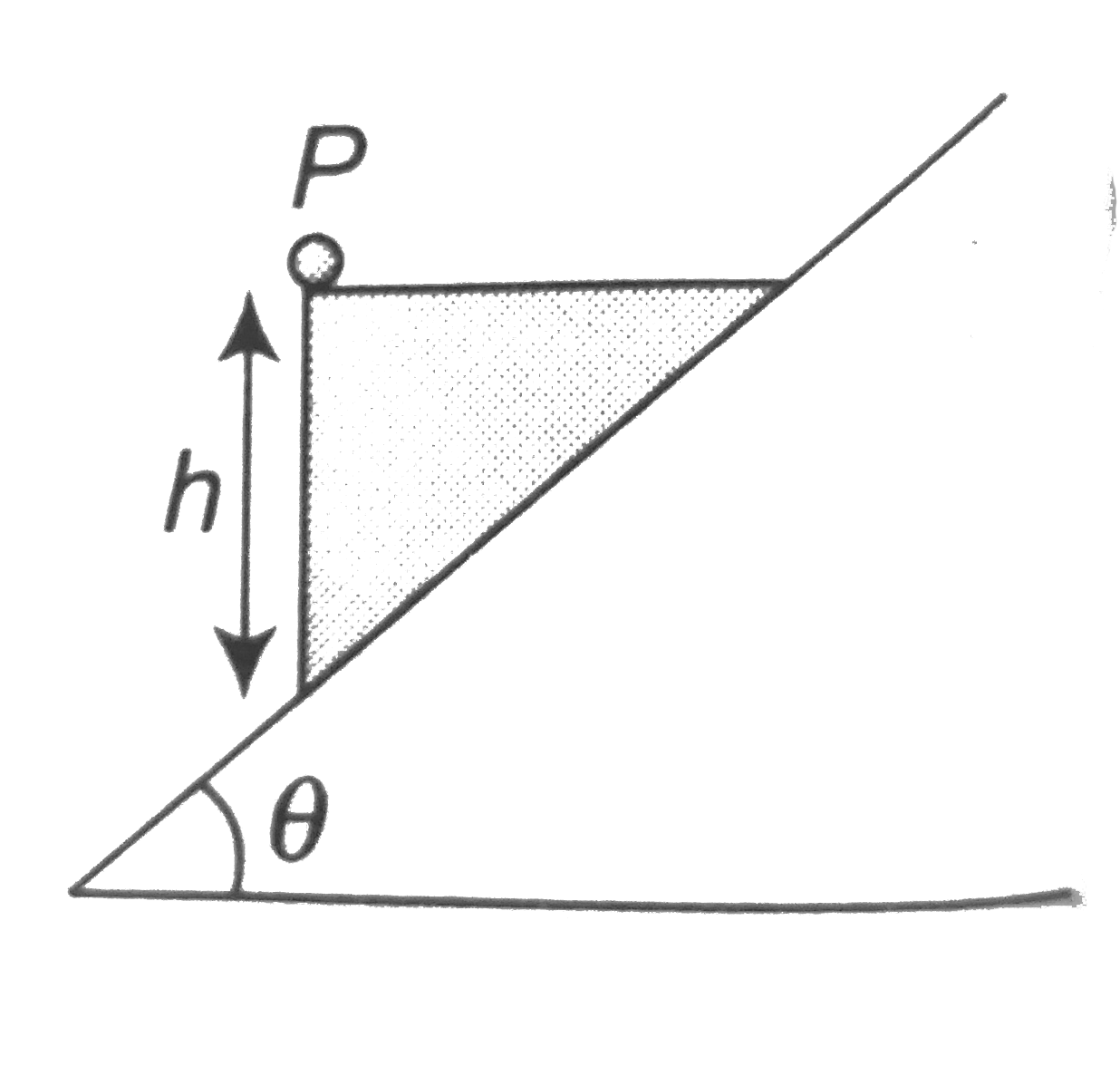 A√2hgsin2θB√2hgsinθcosθC√2hgtanθD√2hgcos2θ
A√2hgsin2θB√2hgsinθcosθC√2hgtanθD√2hgcos2θ
A wedge of mass m1and a block of mass m2are in equlibrium as shown. Inclined surface of the wedge has an inclination α with the horizontal. Each surface is frictionless. The noram reaction on the wedge may be -
 View Solution
View SolutionA wedge mass m rest on horizontal surface. The inclination of the wedge is α. A ball of mass m moving horizontal with speed u hits the inclined face of the wedge in elastically and after hitting slides up the inclined face of the wedge. Find the velocity of the wedge just after collision. Neglect any friction.
 View Solution
View SolutionA particle of mass m strikes normally to a stationary wedge of mass 5m kept on the smooth horizontal surface as shown.If the particle sticks to the wedge then loss in kinetic energy of the system during collision is?
View SolutionA particle of mass m moving with speed u hits a wedge of mass M as shown in figure. If coefficient of restitution is e and friciton can be neglected, then find the speed of the wedge with respect to ground just after the collision.
 View Solution
View SolutionA triangular wedge of mass M is moving with uniform velocity v0 along a smooth horizontal surface in the leftward direction. A particle of mass m falls from rest from height h onto the inclined face, colliding elastically with it. Find velocity of the ball and wedge after the impact taking M = 2m.
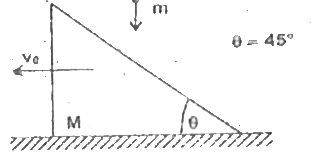 View Solution
View SolutionA wedge of mass M makes an angle θ with the horizontal. The wedge is placed on horizontal frictionless surface. A small block of mass m is placed on the inclined surface of wedge. What horizontal force F must be applied to the wedge so that the force of friction between the block and wedge is zero ?
View Solution

